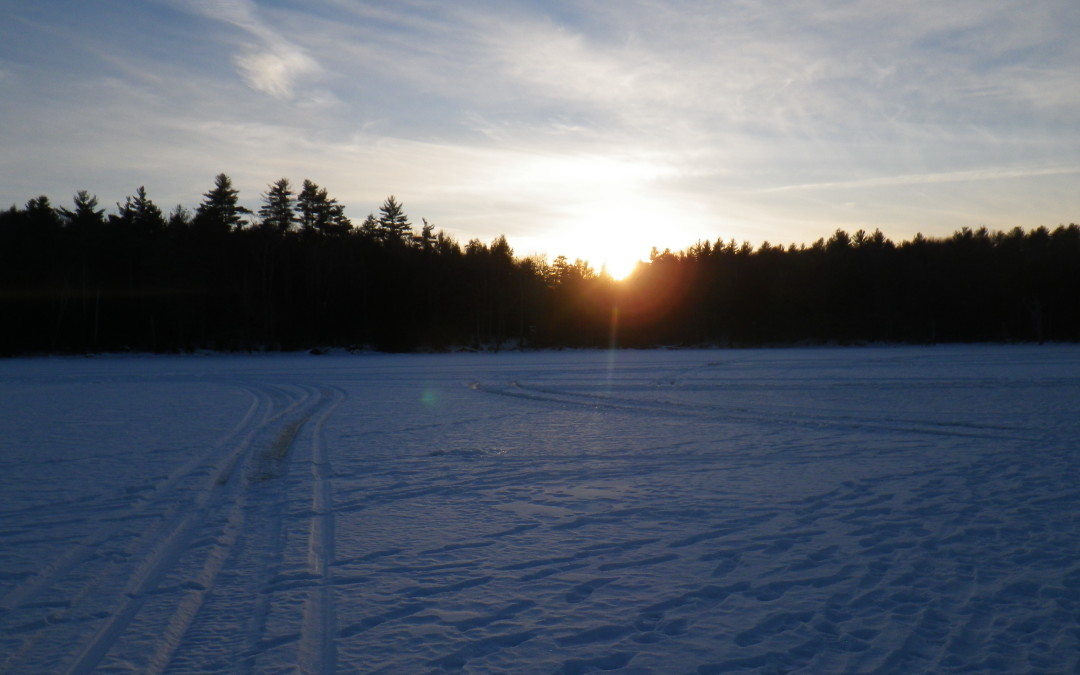Going ice fishing is always a leap of faith. If you have never done this type of angling it can be nerve racking. When I go out for the first time each year I always look for signs that others have been out already. If there are ice shacks on the water I feel much better, but still proceed with caution. I have seen some very questionable decisions through the years and will always trust my gut with ice conditions. If I am unsure or do not feel safe I will forgo ice fishing for the day and will either find open water or work on filling up my fly boxes at my tying desk. One of the allures of ice fishing for me is the thrill of seeing a flag go up. This always brings out a shout of “FLAG” and we quickly run over. Most of the times that we go out we subscribe to an every other flag process to keep everyone involved regardless of whose trap it is. Sometimes the run to the flag is a downright sprint depending on who you are fishing with as the competitive side comes out once in awhile. You should always know where your bait bucket is and carry it to the trap with the sprung flag in case you need to put a new or fresh bait on. Grabbing the bait bucket is not as easy as it sounds and when a flag goes up there is a general scramble to remember where we left it. This always gives me a chuckle as I am usually sitting on it and still find myself looking around for it.
When you get to the trap the next important step is understanding what to do to successfully hook and land your fish. With trout and salmon once they grab your shiner they will run with it, pause and flip the bait so it goes in head first and then continue to run. Slowly lift the trap out of the water, but make sure that the line and the reel can still function if the fish is larger than expected or decides to run away from you. When you are sure that the bait is taken completely, slowly pull the line tight until you feel tension and then give the line a quick tug. You will know quickly if there is a fish on. You may not always land the fish as they may just have part of the bait in their mouth and are fighting to keep the bait from escaping. When the time comes and the fish is near the hole this is where many anglers lose their fish. Watch the bottom of the hole as the ice may be sharp there and may cut your line. Also make sure you lead the fish head first up the hole. If the fish is large reach into the hole to try and get a hold of it as when it comes out of the water it will be flopping around and may come off the hook and slip back into the hole. Last year Dan and I tossed a very nice brook trout out of the hole to ensure that we landed this nice fish. I am sure it was quite comical for anyone watching from shore.
This year has been warmer than usual and the ice has been slower than normal to form up to safe levels. If you are not going to be using a snow sled or other heavier machinery to get out on the ice, four inches of ice can be sufficient. The shore will be thicker than the deeper parts of the lake or pond. If the body of water experiences consistent winds this will keep the ice from forming even if the temperatures allow for ideal ice making conditions. This is why I prefer to fish smaller ponds. I also like to fish hard to reach ponds as this will keep fishing pressure low, as not as many anglers will make the effort to get there. If you are looking for constant action and do not care to keep any fish one would be hard pressed to pass up on a small pond full of pickerel that will keep you chasing flags all day long. It is not uncommon for us to go through three dozen shiners with only ten traps out while on one of these ponds. Also with any live bait be sure that you do not dump any remaining down the hole. This may introduce fish that do not naturally occur in that body of water and may upset the ecological balance. Pay attention to any special regulations as some waters have a specific no live bait stipulation to keep this from happening.









